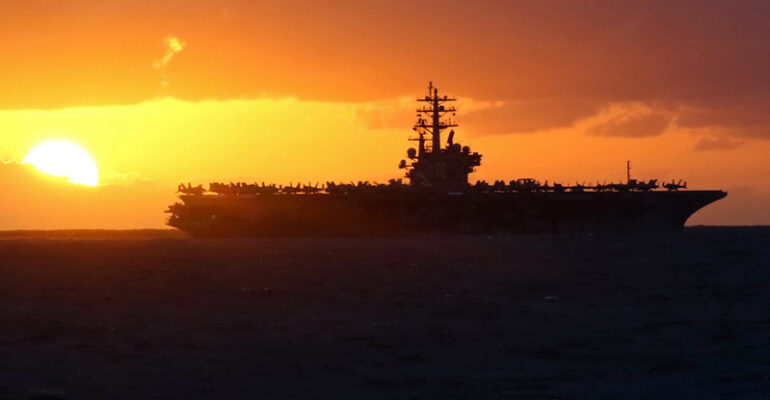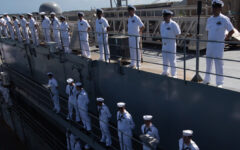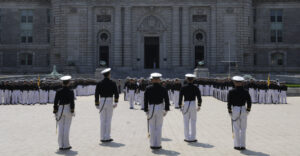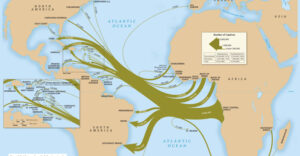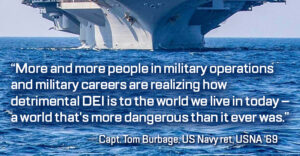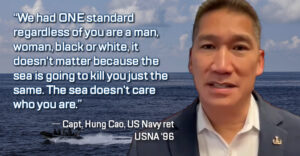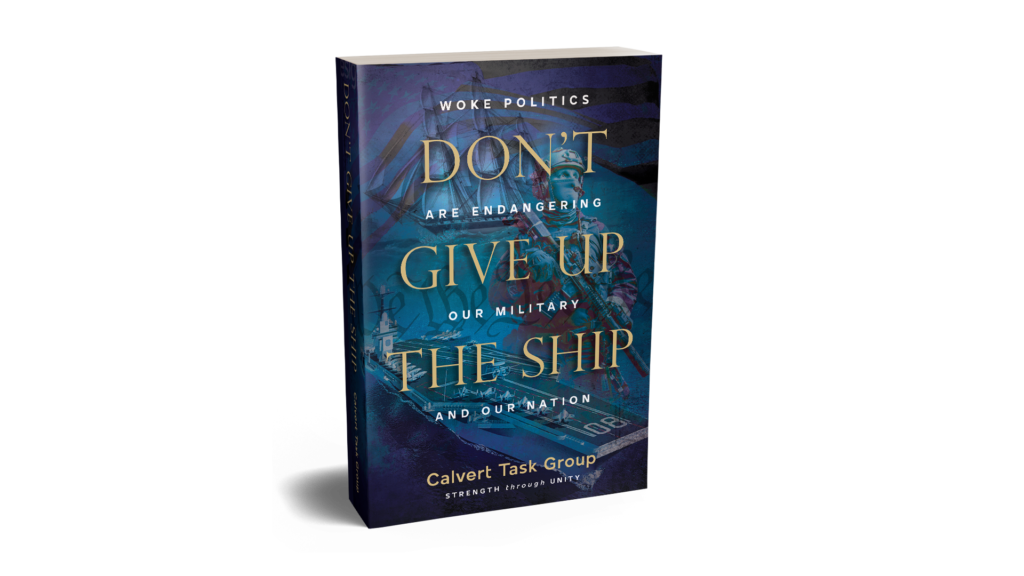Rise and Fall of American Naval Mastery
13 June 2024 2024-06-13 19:29Rise and Fall of American Naval Mastery
By Francis Sempa | Real Clear Defense
Nearly fifty years ago, historian Paul Kennedy wrote a book about the evolution of British naval power titled The Rise and Fall of British Naval Mastery (1976), which reached back to the Elizabethan age through England’s wars with the Dutch, the struggles against Spain and France, a renewed struggle against France, the establishment of Pax Britannica, and its long decline starting with the end of the First World War and continuing through World War II and the Cold War.
It is a book that holds lessons and warnings for American naval power, which in relative terms may be in the process of a similar decline.
Kennedy’s book combined history with geopolitics. It included an entire chapter on the geopolitical writings and theories of Alfred Thayer Mahan, the American naval officer and evangelist of sea power, and Halford Mackinder, the British geographer and statesman whose “Heartland” concept foresaw that Britain and other sea powers would be challenged in the future by continental-sized land powers.
Kennedy recognized that Mahan and Mackinder, though often viewed as presenting clashing geopolitical theories, actually agreed on some fundamental geopolitical issues, including the supreme value of sea power. Mackinder worried that geography, the industrial revolution and other factors presented the opportunity for a continental-sized state to transform land power hegemony into dominant sea power.
Remarkably, Mackinder in 1904 suggested that a more politically organized and technologically advanced China, because of its lengthy “oceanic frontage,” could become a great Eurasian power whose population and resources could be used to strengthen its sea power. That is precisely what has happened in the 21st century.
Kennedy began his book with a discussion of Mahan’s elements of sea power during a time period that Mackinder called the “Columbian epoch” when Europe “emerged upon the world, multiplying more than thirty-fold the sea surface and coastal lands to which she had access, and wrapping her influence round the Euro-Asiatic land-power which had hitherto threatened her very existence.”
Under Elizabeth I, Britain transformed her navy “from a short-range, Narrow Seas, almost a coastal defence, force into a high-seas fleet capable of operating at long range as an ocean-going force.” This occurred, Kennedy writes, just in time to meet the challenges from Holland and Spain. “It laid the basis,” Kennedy continues, “for what has been almost universally regarded as a golden age of English naval enterprise. . .”
These were the times of Drake, Raleigh, the defeat of the Spanish Armada, global explorations and the founding of overseas colonies.
There was a period of temporary decline under the Stuarts and then a series of Anglo-Dutch wars in the mid-17th century. After the Glorious Revolution of 1688, for more than half a century Britain struggled against France and Spain, culminating in the Seven Years War and the War of American Independence.
The French Revolution and the rise of Napoleon Bonaparte set Europe ablaze for nearly thirty years. This was the age of Nelson and sea battles in Egypt, Copenhagen, and off the coast of Spain near Cape Trafalgar. The result of the Napoleonic wars was the establishment of Pax Britannica based on early industrialization, commercial dominance, financial prowess, and all dependent on British sea power. London became the financial center of the world, and Britain’s navy ruled the waves.
In the late 19th century, however, industrialization and technology spread worldwide. Continental-sized states politically cohered and began to challenge Britain at sea. One was Wilhelmine Germany. Another was the United States.
In the Pacific, Japan surprised the European world by using its sea power to successively defeat China then Russia. America was led by President Theodore Roosevelt who imbibed Mahan’s sea power evangelism (the two men were friends and frequent correspondents), which manifested itself in his dispatch of the “Great White Fleet” around the world as the first decade of the 20th century came to an end.
The first manifestation of Britain’s relative decline as a maritime power was during the First World War, when the Royal Navy met the German High Seas Fleet at the Battle of Jutland in 1916. To be sure, the British Navy under the civilian leadership of first Lord of the Admiralty Winston Churchill had effectively transported the British army to the Western Front, the Dardanelles, and the Middle East, and imposed a devastating blockade on Germany.
But Jutland was a draw, and after that sea battle British naval commanders grew more cautious, especially due to the German U-Boat threat. And the war, even with an Allied victory, strained Britain’s financial and human resources.
After the war, Kennedy writes, Britain was “in no position to maintain maritime supremacy against the United States.” Her naval, commercial, and financial leadership was “disappearing.” It was Mackinder who had warned as early as 1902 in Britain and the British Seas, that like other empires Great Britain’s decline would eventually happen. In the Second World War, Britain’s naval mastery was gone. It never returned.
British naval mastery was replaced by that of the United States. Mahan foresaw this. So, too, did Winston Churchill, who during and after the war hitched Britain’s survival and continued geopolitical relevance to the “special relationship” with the United States. The two world wars of the 20th century cost Britain both her empire and naval mastery. The United States, as James Burnham predicted in The Managerial Revolution (1941), became in essence the “receiver” of the British empire.
The intellectual roots of American naval expansion are found in Mahan’s writings. His second book, The Influence of Sea Power upon History, was an international sensation, and he followed-up with other books and essays that urged American statesmen to “look outward” and play a greater role on the world stage, which necessarily meant expanding U.S. sea power.
Like Mackinder, Mahan foresaw in The Problem of Asia geopolitical struggles between Eurasian-based great powers and insular powers such as Great Britain and the United States. Like Mackinder, Mahan viewed a more politically-organized and technologically proficient China as a future threat to U.S. sea power.
It was the Second World War that witnessed America’s eclipse of Britain as the world’s mistress of the seas. Kennedy noted that the war and the “peace” that followed deprived Britain of most of her empire. The two world wars had financially and psychologically exhausted Britain. In the future, the British navy would be nothing more than an appendage of American naval predominance.
Kennedy borrowed a term from Basil Liddell Hart in blaming “strategic over-extension” for the fall of British naval mastery, which he defined as “the possession by a state of numerous defence burdens and obligations without the corresponding capacity to sustain them.”
In the Second World War, the United States built a navy that transported U.S. forces to North Africa, Europe, and many islands in the Pacific, and with surface and subsurface combatants and naval air power won the Battles of the Atlantic and Pacific. America’s shipbuilding infrastructure was the arsenal of naval victories.
U.S. policymakers and strategists in the early years of the Cold War recognized that America was, like Britain, an insular power whose continued access to the Old World required unmatched naval power. Throughout the Cold War, Soviet naval power never seriously threatened America’s “command of the seas,” though there was a temporary lag in relative naval production in the 1970s, which President Ronald Reagan remedied by building a 600-ship navy.
Reagan’s Navy Secretary John Lehman, an intellectual disciple of Mahan who witnessed American naval power’s decline in the mid-to-late 1970s (ironically, under the stewardship of Naval Academy graduate President Jimmy Carter), helped to formulate a “Maritime Strategy” that confronted the Soviets with unmatched naval forces and an offensive posture (including provocative naval exercises) that was designed to deter Soviet aggression and to defeat Soviet forces in the event of war.
In his 2018 book describing the naval buildup and Maritime Strategy, Lehman lamented the state of our post-Cold War naval decline, which he believes has invited today’s challenges by China and other potential adversaries.
The Chinese naval threat is the most serious challenge that America has ever faced to its naval mastery. Today, the U.S. relative naval decline is most evident in shipbuilding capabilities and shipyard capacity–the very capabilities and capacity that enabled us to attain global naval mastery.
The Office of Naval Intelligence last year reported that China’s shipbuilding capacity is 232 times greater than America’s. The relative fleet size of the two navies is 370 for China and 291 for the U.S.
Since 2022, the Chinese Navy has added 30 warships to its fleet, while the U.S. added two. It is projected that by 2030, China’s Navy will have grown to 435 ships while America’s total will be 290.
Within these startling numbers, China has expanded its submarine construction capacity and built its third aircraft carrier.
The American Enterprise Institute’s Mackenzie Eaglen worries that “if these trends don’t change, and soon, the Indo-Pacific will become more dangerous as Beijing will find itself in a far more advantageous position. The U.S. Navy is shrinking within the same timeline in which the [Office of Naval Intelligence] report estimates that Beijing will pursue ‘full reunification’ with Taiwan.”
Although the U.S. probably maintains a general technological and warfighting edge, China has a geographical advantage in the western Pacific, and at some point raw numbers will matter.
During the past 30 years, the United States suffered the same type of “strategic over-extension” that exhausted the British Empire and contributed to the end of its naval mastery. Great Britain was fortunate that its naval mastery successor was a geopolitical ally instead of a rival. We might not be so lucky.
Francis P. Sempa writes the Best Defense column each month.
First published in Real Clear Defense
Some of the comments on the article:
“Ships and tonnage are not at the heart of the decline and fall of the USN. Consider personnel. Over the last 10 years, the USN lost the largest warship since WWII due to a fire at the dock in San Diego likely set by a disgruntled sailor. At the same time there has been a ship that has run aground, and several crippling collisions at sea including with large slow merchant vessels. With modern radar/sensors, there is no excuse for a collision at sea with a merchant ship. These things are all failures of personnel.”
“The absolute and relative size of the US Military, including the US Navy, is in significant decline. The number and quality of men and women willing and able to join the US military is in significant decline. This is especially true with regard to those in the US military who are willing and able to engage in combat operations. The aforementioned is generally the case throughout the West with a few exceptions. Most likely this decline will continue because there is no political will to assertively address the social, cultural, and political causes of the same because of electoral realities. “

